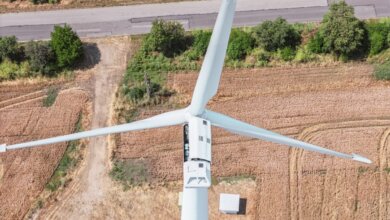Benefits of an Electric Powertrain for Commercial Fleets


The transportation industry is undergoing a radical transformation. Rising fuel costs, stricter emissions regulations, and the growing demand for sustainable logistics are pushing fleet operators to explore smarter alternatives. One solution that continues to gain momentum is the electric powertrain, a system that delivers both environmental and financial advantages.
As commercial fleets begin transitioning away from internal combustion engines, electric powertrains offer a compelling case for long-term performance, lower operating costs, and reduced carbon footprints. Let’s explore how this innovative system is redefining commercial transportation.
What Is an Electric Powertrain?
An electric powertrain is the propulsion system that drives an electric vehicle. It typically consists of components such as an electric motor, a battery pack, an inverter, and a transmission system. Unlike traditional drivetrains that rely on fossil fuels and combustion engines, electric powertrains use electricity as their primary energy source, which can be stored in onboard batteries or generated through regenerative braking.
For fleet managers, switching to electric powertrains means fewer moving parts, less maintenance, and a cleaner overall operation.
Cost Efficiency: Lower Fuel and Maintenance Expenses
One of the most immediate benefits for fleet operators is cost reduction. Electricity is generally cheaper than diesel or gasoline, especially when vehicles can be charged during off-peak hours or through solar-powered charging stations.
Additionally, electric powertrains have fewer mechanical components that wear out. With no oil changes, spark plugs, or complex exhaust systems to maintain, routine service becomes simpler and less expensive. Over the vehicle’s lifetime, these savings can significantly reduce the total cost of ownership.
Enhanced Energy Efficiency
When compared to combustion engines, powertrain electric systems are far more efficient in converting stored energy into vehicle motion. Internal combustion engines typically operate at 20–30% efficiency, whereas electric motors can reach over 85%. This efficiency translates into fewer resources consumed and longer driving ranges on the same amount of energy.
In commercial use, where operational margins are tight and fleet uptime is crucial, such efficiency provides a major competitive edge.
Environmental Impact and Regulatory Compliance
Transitioning to an electric vehicle powertrain reduces a fleet’s greenhouse gas emissions, contributing to sustainability goals and improving urban air quality. This environmental benefit also aligns with tightening emissions regulations in cities around the world.
Many governments now offer tax credits, rebates, or emissions exemptions for electric commercial vehicles. Companies that switch early to electrified fleets can position themselves as industry leaders while benefiting from financial incentives and improved brand reputation.
Reliability and Performance in Urban Environments
Electric powertrains deliver instant torque, resulting in smoother acceleration and quieter operation—two features that are especially advantageous in congested urban environments. For delivery services and transport operators that navigate city streets daily, this means quicker stops and starts, lower noise pollution, and less driver fatigue.
Moreover, regenerative braking systems help recover energy that would otherwise be lost, further extending driving range and efficiency.
Scalability and Fleet Management Integration
Modern EV powertrain systems can be easily integrated into fleet management platforms. Real-time diagnostics, route optimization, and battery monitoring are all features that support efficient fleet operations. These digital tools help companies make informed decisions based on real-time data, ensuring vehicles stay on the road longer and spend less time in service bays.
As battery technology continues to evolve, scalability becomes easier. Fleets can expand gradually, starting with pilot programs before rolling out electric vehicles fleet-wide.
Addressing Range Anxiety with Innovation
One concern for commercial operators is range. However, ongoing improvements in battery technology, charging infrastructure, and modular power systems are quickly closing the gap. Today’s commercial EVs can often meet or exceed the daily mileage needs of most fleet vehicles, especially in urban logistics or last-mile delivery operations.
Conclusion
For commercial fleets seeking a more cost-effective, sustainable, and high-performing alternative to traditional drivetrains, the electric powertrain is proving to be a smart investment. With benefits ranging from lower operating costs and enhanced energy efficiency to regulatory advantages and improved performance, fleet electrification is no longer a question of “if,” but “when.”
As infrastructure improves and battery innovation accelerates, adopting a powertrain electric strategy today can set companies ahead of the curve, meeting compliance needs, reducing emissions, and positioning fleets for long-term success.



